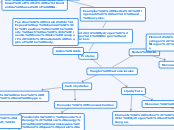Vaughn Macromolecules
Carbohydrates
Monomer: Monosaccharides
Functions: To provide energy, store energy, build macromolecules, and spare protein and fat for other uses.
Examples: Sugars, starches, cellulose,
and glycogen.
Subtopic
Subtopic
Unique characteristics: Is a chain of sugar molecules in a simple form and provide fast energy.
Elements: Carbon, Hydrogen, and Oxygen.
Lipids/Fats
Monomer: Triglycerides
Functions: The functions of lipids include storing energy, signaling, and acting as structural components of cell membranes.
Unique characteristics: lipids cannot dissolve in water and they store energy. Unsaturated fats have some double bonds and saturated fats have no double bonds
Subtopic

Subtopic
Examples: steroids, fats, oils, and waxes.
Elements: Carbon,
Hydrogen, and Oxygen.
Proteins
Amino Acids
Function: Proteins
speed up chemical
reactions in the body such as
insulin. Some also transport
materials throughout the body.
Elements: Hydrogen, Oxygen, Nitrogen and Carbon.
Examples: Muscles, fingernails, hair, and enzymes.
Unique characteristics: primary structure is made up of amino acids and the sequence is based off of the nucleotide bases of DNA.

Nucleic Acids
Monomer: Nucleotides
Elements: Carbon, Hydrogen, Oxygen
Nitrogen, and Phosphorus.
Functions: They store information in the body to make proteins. They also store information needed for the body to function.
Examples: RNA and DNA
:max_bytes(150000):strip_icc()/nucleic-acids-5a4e299d482c5200369e58c3.jpg)
Subtopic

Subtopic
Unique characteristics: Determine the inherited genes of every living being and they are called acids because they are proton (i.e., hydrogen atom) donors, and therefore they carry a negative charge.
